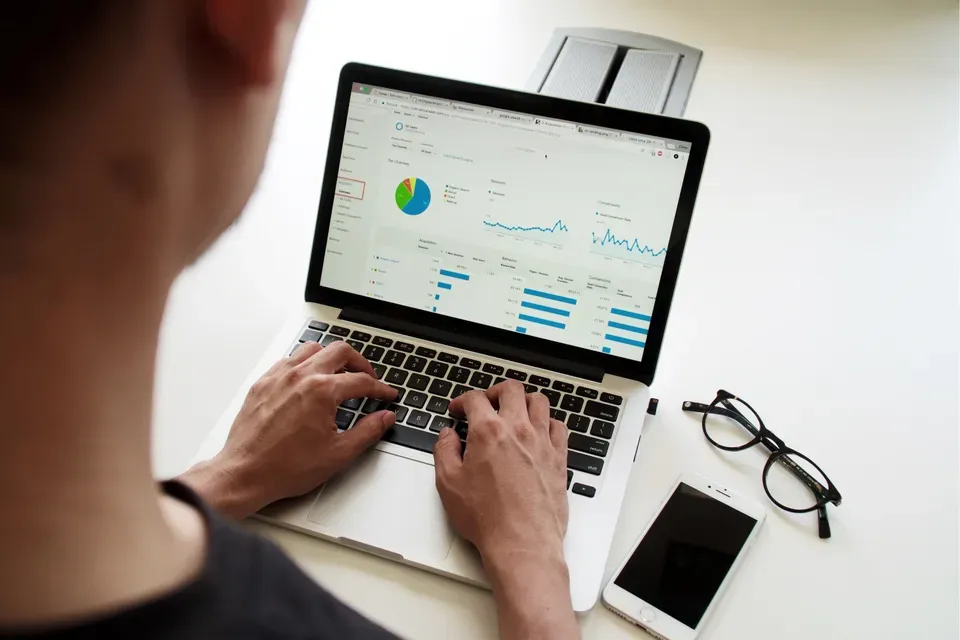
Understanding 9 Key
Website Traffic Metrics
With over 5.18 billion daily Internet users globally, there's a vast pool of potential customers that your website can reach. However, to tap into this potential, you need to understand if your website can attract these visitors. This is where your website traffic statistics come into play.
These numbers provide insights into how many people visit your site and their activities during their visit. Web stats can help you evaluate the effectiveness of your marketing strategies and whether they're driving traffic.
However, these metrics are only beneficial if you know how to interpret them. Here's a guide to understanding the most critical website traffic statistics and what they imply for your business.
The Significance of Website Statistics
Website statistics can provide valuable insights into your business performance. They can help you identify areas of improvement on your website. For instance, if visitors aren't staying long enough to read an article or watch a video, they're less likely to explore other engaging content.
These stats can guide you in making necessary adjustments to your website to increase conversions.
Decoding Website Traffic Statistics
If you aim to enhance your website and attract more visitors, understanding its current performance can help you make the required changes. You can collect website statistics from various sources. The following are some of the most commonly used metrics.
1. Unique Visitors
Unique visitors is a metric that represents the total number of distinct users who visit your site. It excludes multiple visits from the same individual. For instance, if you visit a website 10 times in a day, it counts as 1 unique visit.
Even if you revisit the same site after a few days, it will still count as one unique visit, as unique visits are counted within a 30-day window.
2. Website Visits (Or Sessions)
Website visits are counted when a user requests a page from the server, generating one visit.
Each time someone visits your site and clicks on something to load another page, it counts as another visit. For example, if someone visits your site 48 times within 30 minutes, you'll have 48 visits recorded.
A session refers to the duration a user spends interacting with your website. This number is crucial for marketers as it helps measure engagement.
3. Total Page Views
Total page views represent the total number of times any page on your site has been viewed. This includes both single-view and multiple-view visits. For instance, if a visitor views 10 pages in one visit, they'll be counted as one visitor but with 10 total page views.
4. Pages Per Visit
Pages per visit is a metric that gauges the level of engagement of your site's visitors with your content. It's calculated by dividing the total number of page views by the total number of visitors.
A high pages-per-visit ratio indicates that people are spending more time viewing and interacting with your content. This is a positive sign as it implies that your website is effective at converting visitors into leads or customers.
5. Average Time on Site
(Or Average Session Duration)
The average time on site represents the average duration people spend visiting your website. It's calculated by dividing the total time spent on your website by the number of visitors.
A high average suggests that visitors are spending a significant amount of time interacting with your content rather than just clicking through quickly. If a visitor spends an hour on your site, they're more likely to be interested in your offerings than if they only spend 30 seconds.
The average session duration is typically around one minute, regardless of the industry.
6. Bounce Rate
The bounce rate measures the percentage of visitors who leave a website after viewing only one page. It indicates the level of engagement with your webpage's content and whether users are finding what they're looking for.
A bounce rate under 40 percent is excellent, suggesting that your website is appealing and engaging.
7. Mobile Site Visits
Mobile site visits refer to the traffic generated when a user accesses your website using a mobile device. Mobile traffic is HUGE as it accounts for about 70% of all internet usage.
If your mobile site visits are low, it might be worth checking if your website loads quickly on mobile devices and is optimized for smaller screens.
8. Inbound Links
Inbound links are external hyperlinks that direct to your website. Links from other sites to your own signal to Google that you're a credible source of information. Consequently, you'll be rewarded with higher placement in search results.
However, it's important to note that not all backlinks are created equal. While each one contributes to your SEO ranking, not all inbound links will provide the same boost.
9. Traffic Sources
Traffic sources refer to the channels that direct visitors to your website. They can be categorized into two types, organic and paid.
Organic traffic is free and originates from search engines like Google, social media platforms like Facebook and Twitter, email campaigns, or any other source that's not paid for by you. Paid traffic can include anything from PPC ads on search engines to campaigns on social media platforms.
Design a Website That's Built
to Attract Visitors
Your website traffic stats are a crucial part of your SEO strategy. If you aim to improve your metrics, it's essential that users can easily navigate your website and find what they're looking for. To achieve this, your website should have a clean design with ample white space and clear navigation menus.
As you can see, creating a professional-looking website is not as straightforward as it seems. Why take on the challenge when Reputable Image can do it for you? Reach out to our team of designers today to learn more about how we can help you build an impressive website that drives traffic.

